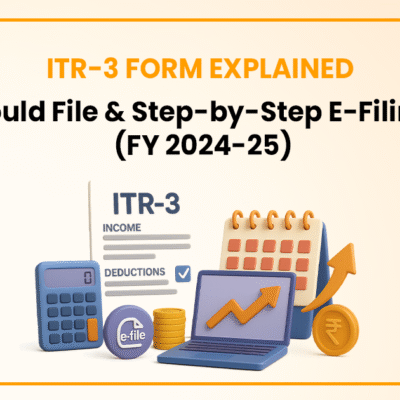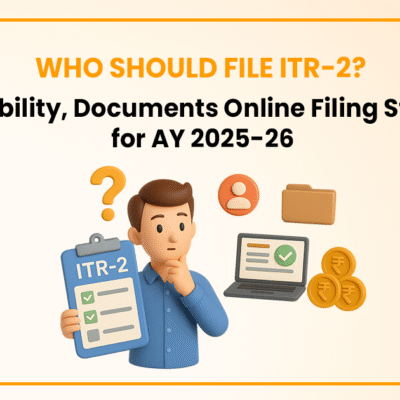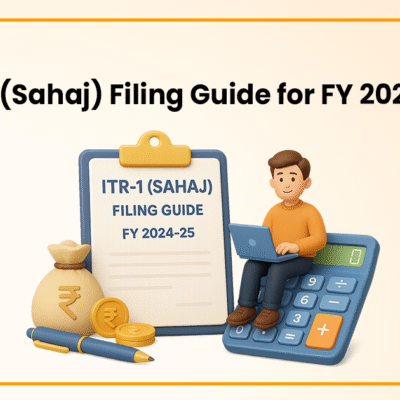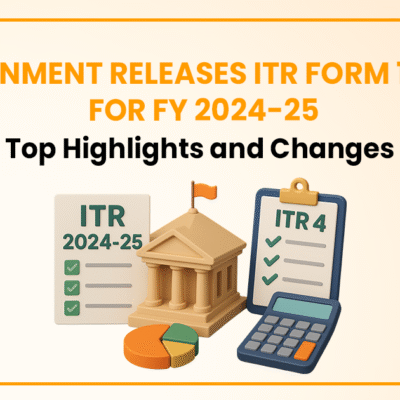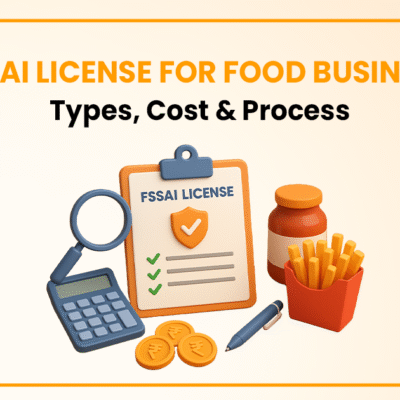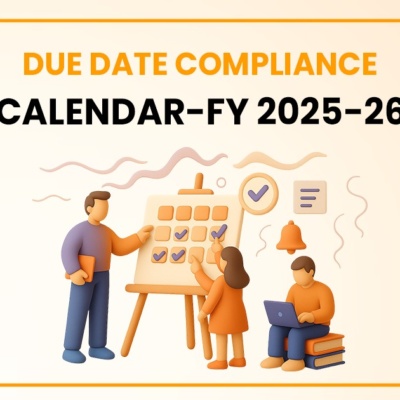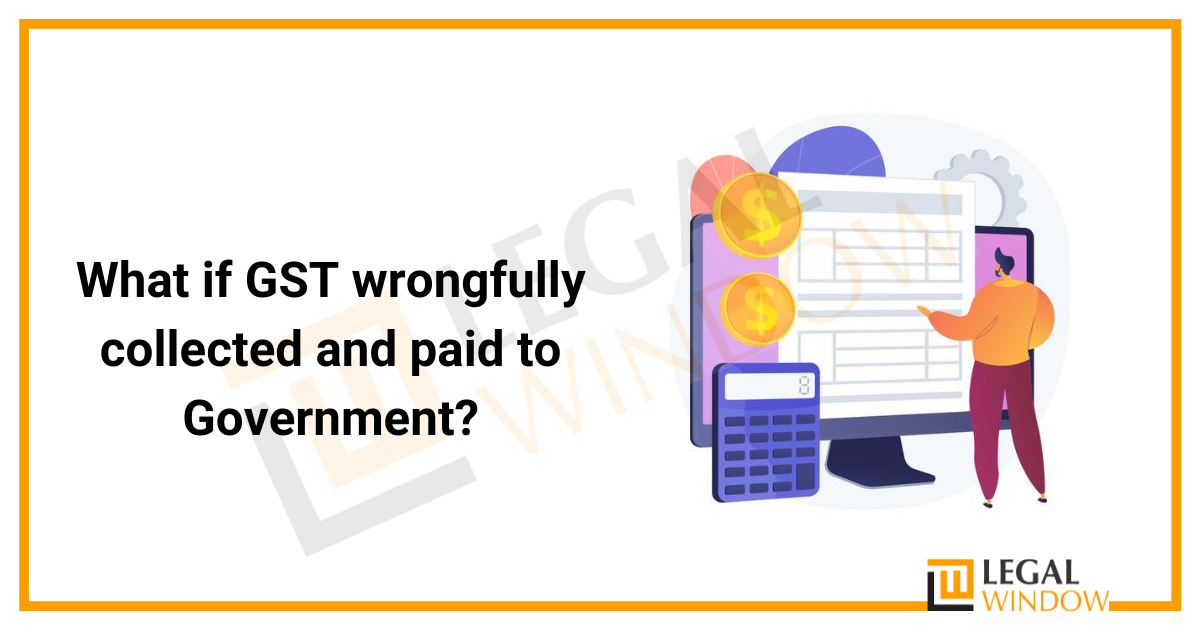
GST i.e. Goods and Service Tax is an indirect tax i.e. collected from customers and paid to the government. The Act also provide all the detailed provisions about its collection, payment, due date of payment, due date of returns etc. Now, what happens if the GST is wrongfully collected and paid to the government? Well this will be our scope of discussion in the article. The discussion is based on the judgment in a recent case where GST was collected and paid wrongfully to the government.
| Table of Contents |
Basics about GST
As mentioned earlier, GST is an indirect tax. Simply put, any businessman who is eligible for paying GST on the basis of turnover, has to issue a tax invoice to his buyer. On the value of goods/services GST has to be charged at applicable rates. Now, the buyer will pay the tax to businessman and businessman is supposed to pay the same to the government. The payment of GST can be done through available input credit or cash as the case may be. Also the buyer if eligible to take input credit, can take so and set-off the same with his liability of output tax.
In between this simple looking process there is a full-fledged mechanism and jargon of technical terms that we need to understand before discussing the case law.
Meaning of Some Important Terms
- GSTR-1- GSTR-1 is a return that is required to be filed by every registered taxpayer. It can be filed monthly or quarterly depending on the turnover limits. The return contains details of all taxable outward supplies made by the business. The details of Inter-State and Intra-State sales are given in this return form.
- GSTR-3B– GSTR 3-B is a return that is required to be filed by all registered taxpayers monthly or quarterly depending on their turnover. This return form contains details about such as inward and outward supplies of goods or services, input tax credit availed, tax payable, tax paid, etc. The return needs to be filed even if there is no sale and purchase during the period.
- Electronic Cash Ledger- It is just like a bank account maintained online. Whatever payment has to be made for GST is made through Electronic Cash Ledger. After utilizing the eligible credit, any amount of GST that remains payable has to be paid using the electronic cash ledger.
- Electronic Credit Ledger- Where the electronic cash ledger keeps a track of the output tax paid in cash, the credit ledger keeps track of the input tax credit availed on various inputs taken. It keeps a record as to how much credit was availed and utilized during a particular period.
Both these ledger are available on GST portal for all registrants and taxpayers.
Mechanism of CGST, IGST and SGST
The registration under GST is to be taken state-wise. Therefore, GST is levied in three forms-
- CGST (Central GST) – Levied on Intra-State Sales. Both seller and buyer
- SGST (State GST) – Levied on Intra-State Sales. Registered under same state
- IGST (Integrated GST) – Levied on Inter-State Sales
Now, when a tax invoice is prepared, say for a service taxable at 18%, then in case of

These were the basic concepts that will help us understand the arguments made in the case and also the judgment made.
Background of the Case
The case discussed here is Shree Nanak Ferro Alloys Pvt. Ltd. Vs. GST Department.
- The taxpayer is a company registered under CGST and IGST Act.
- In the month of September, 2017 i.e. just within 3months the levy of GST was started, the taxpayer filed his GSTR-1 and subsequently GSTR-3B.
- Now, the issue was that both GSTR-1 and GSTR-3B of the month September-2017 were contradictory to each other-
| GSTR-1 | GSTR-3B |
| IGST Liability- Rs.74.51 lakhs | IGST Liability- Rs.32.52 lakhs |
| CGST Liability- Rs.2.68 lakhs | Liability-Rs.44.67 lakhs |
- This matter came into light almost after 1 year and taxpayer was asked to pay the deficient IGST with applicable interest.
- And taxpayer claimed that it is just a misclassification, so he should not be made to bear the interest.
Let us now see arguments made from both the parties which will help us understand facts of the case further.
Claims made by petitioner and respondent
| Basis | Petitioner | Respondent |
| Intentions of the Taxpayer |
|
|
| Adjustment of CGST to IGST |
|
|
| Claimed relief
under certain provisions |
|
|
After listening to both sides, let us see the decision of the Honorable High Court in this regard.
Judgment of the High Court
- High Court emphasized the fact that the petitioner company had discharged its liability in full. No transaction has been concealed or fraud has been committed by the company.
- The intentions of the company cannot be doubted as mistake has indeed happened in quite early phase of implementation of GST.
- High court held that even though GST was wrongly collected and paid to the government, company does not gain any benefit from doing so.
- It also emphasized that provisions of CGST and IGST Act (as discussed above) clearly states that no interest can be collected from a registered person in case the classification of a supply changes eventually.
- Also the fact that company is ready to pay the amount under IGST makes the argument of adjustment of IGST and CGST irrelevant.
- The final verdict of the case was-
- Petitioner Company was directed to pay the amount deficient under IGST.
- No interest has to be paid by the Company.
- For the amount paid excess in CGST, it was held that company can claim refund or adjust the amount against its future liabilities.
- The writ application of the company was therefore allowed.
Conclusion
From the above discussion we can say that wherever the intentions of the registered person are not malafide the law and judiciary are always there to help. In this case, we have seen that law already had the provisions with regards to non-levying of interest in case the classification of the supply changes eventually. Also provisions for allowing the refund wherever the officer is satisfied that same has to be issued are already in place. Emphasis of this judgment that if there is no fraud or concealment from side of the taxpayer than relevant reliefs provided by the act should be extended to them.
Company Secretary and diligent learner deeply immersed in the world of corporate law, compliance, and governance with a focus on developing a robust foundation in legal principles and corporate practices. Passionate about exploring the intricacies of company law, regulatory compliance, and corporate governance.
Categories
- Agreement Drafting (23)
- Annual Compliance (13)
- Change in Business (37)
- Company Law (150)
- Compliance (90)
- Digital Banking (3)
- Drug License (4)
- FEMA (17)
- Finance Company (42)
- Foreign Taxation (9)
- FSSAI License/Registration (15)
- GST (123)
- Hallmark Registration (1)
- Income Tax (213)
- Latest News (34)
- Miscellaneous (170)
- NBFC Registration (8)
- NGO (18)
- SEBI Registration (6)
- Section 8 Company (10)
- Start and manage a business (27)
- Startup/ Registration (134)
- Trademark Registration/IPR (48)
Recent Posts
All Website Tags
About us
LegalWindow.in is a professional technology driven platform of multidisciplined experts like CA/CS/Lawyers spanning with an aim to provide concrete solution to individuals, start-ups and other business organisation by maximising their growth at an affordable cost.

